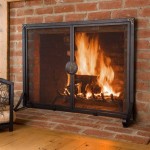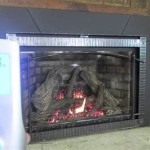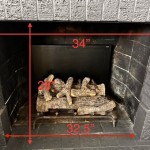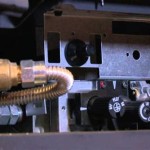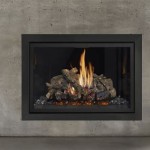```html
Thin Wall Fireplace: Design, Installation, and Considerations
A thin wall fireplace, often referred to as a zero-clearance or direct-vent fireplace, presents a sophisticated heating solution for modern homes, particularly those with limited space or specific design constraints. Unlike traditional masonry fireplaces that require substantial construction and clearances from combustible materials, thin wall models are engineered for minimal clearance, enabling installation directly against or within standard framed walls. This capability offers significant advantages in terms of space optimization, aesthetic flexibility, and installation cost.
The core principle behind the thin wall fireplace lies in its insulated firebox and venting system. The insulation minimizes heat transfer to surrounding materials, while the direct-vent system draws combustion air from outside the home and expels exhaust gases directly outdoors through a sealed pipe. This closed combustion system enhances energy efficiency and improves indoor air quality by preventing backdrafting and minimizing the risk of carbon monoxide poisoning. The direct-vent system typically utilizes a coaxial pipe, where the inner pipe exhausts combustion gases and the outer pipe draws in fresh air.
Thin wall fireplaces are available in various fuel options, including gas (natural gas and propane), electric, and ethanol. Each fuel type offers distinct advantages and disadvantages regarding energy efficiency, cost, and environmental impact. Gas fireplaces provide realistic flames and consistent heat output, while electric fireplaces offer ease of installation and operation, requiring only a standard electrical outlet. Ethanol fireplaces provide a smokeless and ventless option, but their heat output is typically lower. The choice of fuel depends on the homeowner's preferences, budget, and the specific requirements of the installation location.
Key Design and Construction Features
The design and construction of thin wall fireplaces are crucial for ensuring safety, efficiency, and longevity. Several key features distinguish these units from traditional fireplaces.
Insulated Firebox: The firebox, the central chamber where combustion occurs, is heavily insulated to prevent heat from radiating outward. This insulation is typically achieved using materials such as ceramic fiber blankets, mineral wool, or specialized refractory materials. The level of insulation dictates the minimum clearance required to combustible materials, and manufacturers specify these clearances in their installation manuals. Proper insulation is essential for preventing overheating and potential fire hazards.
Direct-Vent System: As previously mentioned, the direct-vent system is a critical component of thin wall fireplaces. This system ensures that all combustion gases are safely vented outside the home, preventing indoor air pollution. The vent pipe is typically made of double-walled stainless steel or aluminum and is designed to withstand high temperatures and corrosive gases. The vent system must be installed according to the manufacturer's specifications to ensure proper draft and prevent leaks.
Sealed Combustion Chamber: The sealed combustion chamber ensures that the fire draws its air supply exclusively from the outside, preventing it from consuming air from within the living space. This feature enhances energy efficiency and eliminates the need for a dedicated air supply duct. The sealed design also minimizes the risk of backdrafting, where combustion gases enter the home due to negative pressure.
Safety Features: Thin wall fireplaces incorporate various safety features to protect homeowners from potential hazards. These features may include flame sensors that automatically shut off the gas supply if the pilot light goes out, overheat sensors that prevent the unit from overheating, and safety screens that prevent sparks from escaping the firebox. Regular inspection and maintenance of these safety features are crucial for ensuring the safe operation of the fireplace.
Installation Considerations for Thin Wall Fireplaces
Proper installation is paramount for the safe and efficient operation of a thin wall fireplace. The installation process typically involves several key steps.
Site Preparation: The first step is to prepare the installation site by ensuring that the wall is structurally sound and that there are no obstructions in the path of the vent pipe. The framing around the fireplace opening must be constructed according to the manufacturer's specifications, and any necessary electrical or gas lines must be properly installed.
Vent Pipe Installation: The vent pipe must be installed according to the manufacturer's instructions to ensure proper draft and prevent leaks. The correct type and size of vent pipe must be used, and all connections must be properly sealed. The vent pipe must be routed to terminate outside the home in a location that meets local building codes and regulations. This typically involves ensuring adequate clearance from windows, doors, and other potential sources of air intake.
Fireplace Placement: The fireplace unit is then carefully placed within the framed opening and secured in place. The unit must be properly leveled and aligned to ensure that the vent pipe is properly connected and that the fireplace operates smoothly. Adjustments must be made to ensure proper clearances to combustible materials, ensuring that the unit meets all safety standards.
Gas or Electrical Connections: If the fireplace is gas-fueled, a qualified gas technician must connect the gas line to the unit. All gas connections must be tested for leaks before the fireplace is operated. If the fireplace is electric, it simply needs to be plugged into a standard electrical outlet. However, it's crucial to ensure the outlet is properly grounded and can handle the electrical load of the unit.
Finishing: Once the fireplace is installed and connected, the surrounding wall can be finished to create a seamless and aesthetically pleasing appearance. This may involve installing drywall, tile, stone, or other decorative materials. It is crucial to ensure that all finishing materials meet the manufacturer's specifications for allowable clearances to the fireplace unit. Non-combustible materials are often recommended for the immediate surround.
Maintenance and Safety
Regular maintenance is essential for ensuring the safe and efficient operation of a thin wall fireplace. Neglecting maintenance can lead to performance issues, safety hazards, and reduced lifespan. Owners should perform regular checks of key components and adhere to recommended servicing schedules.
Vent System Inspection: The vent system should be inspected annually for blockages, corrosion, or damage. Birds' nests, leaves, and other debris can obstruct the vent pipe, impeding airflow and increasing the risk of carbon monoxide poisoning. Any damage to the vent pipe should be repaired promptly by a qualified technician.
Burner Cleaning: The burner assembly should be cleaned regularly to remove soot, dust, and other debris that can accumulate over time. A clogged burner can result in an inefficient flame, reduced heat output, and increased carbon monoxide emissions. The burner can be cleaned using a soft brush and a vacuum cleaner, following the manufacturer's instructions.
Glass Cleaning: The glass front of the fireplace should be cleaned periodically to remove soot and fingerprints. A specialized glass cleaner designed for fireplaces should be used to avoid damaging the glass. Never clean the glass when the fireplace is hot.
Safety Checks: The flame sensor, overheat sensor, and other safety features should be tested regularly to ensure that they are functioning properly. If any issues are detected, a qualified technician should be contacted to perform repairs. The carbon monoxide detector in the home should also be tested regularly to ensure that it is functioning properly. Batteries should be replaced as needed.
Professional Servicing: A qualified technician should inspect and service the fireplace at least once a year. This service should include a thorough inspection of all components, cleaning of the burner assembly, and testing of the safety features. Regular professional servicing can help to identify and address potential problems before they become serious safety hazards.
By understanding the design principles, installation requirements, and maintenance procedures for thin wall fireplaces, homeowners can enjoy the benefits of a stylish and efficient heating solution while minimizing the risks associated with improper installation or neglect. Diligence with regular maintenance and safety checks can help ensure long-term reliability and safety.
```
Costway Electric Remote Control 5000 Btu 50 In Wall Fireplace Black Ep24705 The Home Depot

Fire Ribbon Direct Vent Slim Gas Fireplace Spark Modern Fires

36 Inch Ultra Thin Wall Mounted Electric Fireplace Costway

Sierra Flame Wm Slim 36 Wall Mount Electric Fireplace

Boyel Living 60 In Recessed Ultra Thin Wall Mounted Electric Fireplace Black Wf Ep24706 The Home Depot

Okada 36 Electric Fireplace Insert 3 86 Ultra Thin Wall Mounted In Easy Installation With Remote Control 750w 1500w Low Noise Fake Fire Com

Polar Aurora 36 Ultra Thin Electric Fireplace Recessed And Wall Mounted Heater Adjustable Flame With Timer Remote Control 750 1500w Com

Livingandhome 60 Inch Led Electric Fireplace Wall Mounted Insert Heater 9 Flame Colours

60 Inch Recessed Ultra Thin Mounted Wall Electric Fireplace Myers Goods Home Decor

Boyel Living 50 In Recessed Ultra Thin Wall Mounted Heater Electric Fireplace Black Wf Ep24705 The Home Depot
Related Posts

